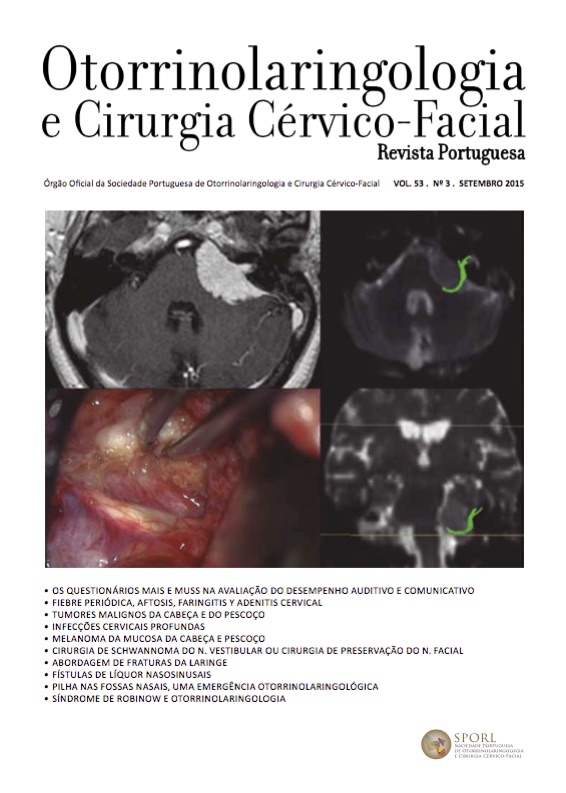Mais and muss questionnaires in the evaluation of auditory and communication development in children who use cochlear implant
DOI:
https://doi.org/10.34631/sporl.591Keywords:
Cochlear implant, Meaningful Auditory Integration Scale, Meaningful Use of Speech ScaleAbstract
Objectives: The authors aimed to characterize the evolution of auditory and communication development of children with prelingual hearing impairment who use cochlear implant in the first three years after cochlear implantation.
Materials and methods: 32 children with sensorineural bilateral profound prelingual hearing loss who use cochlear implant were studied. The evaluation instruments were Meaningful Auditory Integration Scale (MAIS) and Meaningful Use of Speech Scale (MUSS). The participants were evaluated at 3, 6, 12, 18, 24 and 36 months after cochlear implant activation.
Results: In all 6 evaluation moments there was an increase of both scale’s scores. Correlation was found between both scales’ scores.
Conclusion: The MAIS scale showed, in all evaluation moments, higher scores than the MUSS scale, which points to the importance of an initial period focused on the development of the integration of auditory information, followed by an increase in the development of speech.
Downloads
References
Marschark M, Rhoten C, Fabich M. Effects of Cochlear Implants on Children’s Reading and Academic Achievement. The Journal of Deaf Studies and Deaf Education. 2007;12(3).
Spencer LJ, Barker BA, Tomblin JB. Exploring the Language and Literacy Outcomes of Pediatric Cochlear Implant Users. Ear & Hearing. 2003;24(3).
Robbins AM, Koch DB, Osberger MJ, Zimmerman-Phillips S, Kishon-Rabin L. Effect of Age at Cochlear Implantation on Auditory Skill Development in Infants and Toddlers. Arch Otolaryngol Head Neck Surg. 2004;130.
Pinto ESM, Lacerda CBdF, Porto PRC. Comparação entre os questionários IT-MAIS e MUSS com vídeo-gravação para avaliação de crianças candidatas ao implante coclear. Revista Brasileira de
Otorrinolaringologia. 2008;74(1).
Waltzman SB, Roland JT. Cochlear Implantation in Children Younger Than 12 Months. Pediatrics. 2005;116(4).
Umat C, Hufaidah KS, Azlizawati AR. Auditory Functionality and Early Use of Speech in a Group of Pediatric Cochlear Implant Users. Med J Malaysia. 2010;65(1).
Robbins AM, Renshaw JJ, Berry SW. Evaluating meaningful auditory integration in profoundly hearing impaired children. American Journal of Otology. 1991;12.
Ferreira PL, Silva LF. Avaliação da Eficácia da Reabilitação áudio oral em crianças com surdez profunda. Revista Portuguesa de Otorrinolaringologia e Cirurgia Cérvico-Facial. 2005;43(3).
Robbins AM, Osberger MJ. Meaningful Use of Speech Scale (MUSS).
Indianopolis, Indiana University School of Medicine; 1990.






